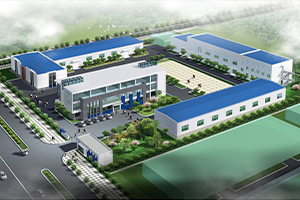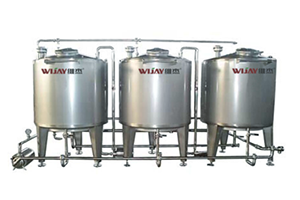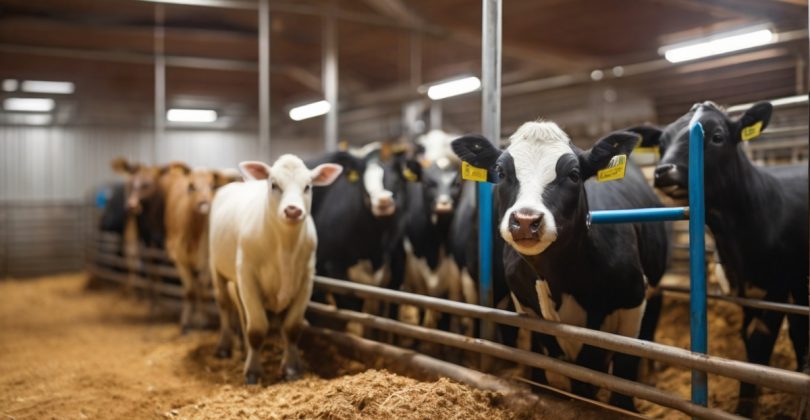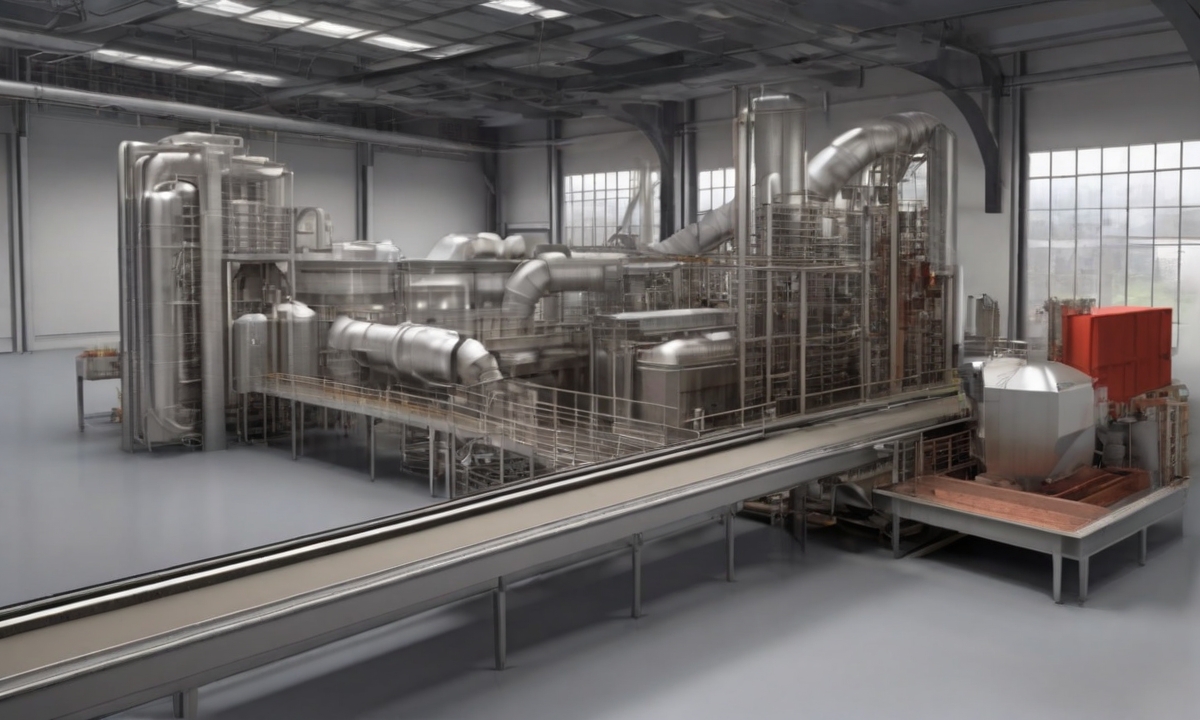Livestock farming plays a crucial role in meeting the world’s growing demand for food, but it also presents challenges in terms of efficiency and animal welfare. One key aspect of livestock care is feeding, which can be labor-intensive and prone to human error. However, with advancements in technology, automatic feeding systems offer a promising solution to optimize livestock care. By automating the feeding process, farmers can ensure consistent and precise nutrition for their animals while reducing labor costs and improving efficiency. In this article, we will explore the benefits and features of automatic feeding systems and discuss how they can help farmers optimize livestock care.
The Rise of Automated Feeding Technology in Modern Agriculture
The evolution of agriculture has been marked by significant technological advancements, among which, automated feeding technology stands as a major milestone. Modern farming, now intricately woven with progressive technology, has embraced new methods such as precision feeding systems and automatic feed dispensers – all designed to improve efficiency, care for livestock health, and boost productivity.
Automated feeding technology, though a relatively recent addition to the agricultural landscape, has extensively influenced farming operations globally. It began as a response to the growing demand for innovative and effective methods of livestock management.
- Integration of automated feeding technology into agriculture commenced as an effort to minimize labor, ensure precision in nutrient delivery, and automate routine tasks, resulting in increased productivity.
- As farming operations expanded, the need for more efficient and accurate livestock feeding methods became evident. Precision feeding systems rose to this challenge, providing much-needed enhancement for livestock care.
- With the industry’s evolution, automatic feed dispensers have become an essential component of modern farming. These devices not only automate feeding schedules and volume but also adapt to the specific dietary needs of diverse livestock, ensuring their health and optimal growth.
This rapid adoption of automated feeding technology in agriculture signifies the sector’s commitment to embracing modern solutions. The goal – a sustainable, productive, efficient, and humane approach to livestock management.
Benefits of Implementing an Automatic Feeding System
The technologies behind automatic livestock feeding are transforming the world of agriculture. By automating the feeding process, farmers have seen significant improvements in three core areas – efficiency, animal health, and productivity. Below, we delve into these benefits in greater depth.
1. Efficiency:
- With feeding automation, farmers save valuable time and labor costs. They no longer need to manually prepare and distribute feed, allowing them to focus on other important tasks. These automation systems also guarantee accurate and consistent food distribution, minimizing waste.
2. Animal Health:
- An automatic feeding system ensures that livestock gets the correct balance of nutrients at the right times, which is key to maintaining their well-being. Consistent and balanced feeding not only decreases the risk of malnutrition but also strengthens the animals’ immune systems, reducing instances of disease.
3. Productivity Gains:
- A healthy livestock population translates into increased productivity. The automation of feeding can optimize the growth rates and reproduction capabilities of livestock. Moreover, the streamlined efficiency of an automatic feeding system lowers operating costs and increases the overall profitability of a farm.
An automatic feeding system is an investment that pays dividends across several tiers of livestock management. It offers far-reaching efficiency improvements, fosters better animal health, and drives productivity gains for a more prosperous, future-proof farming industry.
Automatic Livestock Feeding: Key to Precision Animal Husbandry
As the next frontier in agricultural advancement, automatic livestock feeding presents a notable solution for precision animal husbandry. Powered by innovative robotic feeding systems, livestock farmers can now leverage unprecedented accuracy in feeding programs, resulting in significant operational improvements across several key metrics.
Improving Feed Efficiency with Precision Feeding Systems
By wijay industries introducing precision feeding systems into their routines, farmers gain high-value advantages such as improved feed efficiency. Integrating smart technologies offers the ability to precisely measure and administer the correct volumes of feed needed by each animal. This accuracy contributes hugely to reducing waste and promoting cost savings. By ensuring that each animal receives the right volume and type of feed, these systems effectively minimize feed overages, underages, and related costs.
- Improved feed efficiency results in healthier animals and higher quality produce.
- Reduced waste contributes to cost savings and supports sustainable farming practices.
- Robotic feeding systems simplify managing feed inventory, freeing farmers to focus on other critical areas of farm management.
Customizable Nutrition Programs with Smart Feeding Solutions
One distinct feature of smart feeding solutions is the unparalleled capacity for customization. They can be programmed to offer individualized diets tailored to the specific needs of each animal. This personalization of nutrition caters to the unique needs of animals at different stages of life, varying health conditions, or distinct breeds, all aimed at enhancing animal performance.
- Customizable nutrition programs result in livestock demonstrating improved growth rates, health, and production.
- The application of smart feeding solutions have a far-reaching positive impact on the overall farm’s productivity and profitability.
- Individualized diets foster healthier farm animals, minimizing medicinal expenses and promoting animal welfare.
With automatic livestock feeding, precision in animal husbandry has become a realizable goal for many farmers. Armed with robotic feeding systems that promote efficiency and customization, the future of farming is looking brighter, healthier, and much more profitable than ever before.
Automatic Feeding System for Different Livestock Types
In order to meet the unique dietary needs of varying livestock species, automatic feeding systems can be specialized accordingly. From poultry and cattle, to pigs – each type of livestock requires a unique approach to automatic feeding.
Specialized Automatic Poultry Feeders
Automatic poultry feeders have been a game changer in the poultry industry, especially for chickens. They are designed to provide consistent and automatic feeding – thereby ensuring optimal growth and production. From adjusting for daily feed intake, to eliminating waste – such poultry feeders are highly efficient and practical for modern poultry rearing operations.
Robust Automatic Feeding System for Cattle
The automatic feeding system for cattle has revolutionized the way feed is delivered to the herd. It’s all about delivering the right nutrients, at the right time, in the right amount. The major advantage of these systems stems from their efficient nutrient delivery mechanism which contributes significantly to overall herd health, productivity, and management.
Innovative Automatic Feeding System for Pigs
Pig farming too has seen significant improvements with the adoption of automatic feeding systems. Swine industry has embraced this technology for its multiple benefits including feed savings, labour reduction, and enhanced animal performance. The innovative feeding technologies associated with automatic pig feeders allow for better control of food quantity and quality, thereby promoting healthier and more productive hogs.
Integration of Robotic Feeding Systems into Farm Management
As technology continues to evolve, so too does the agricultural sector. One such advancement that has reshaped the way we approach livestock care is the rise of robotic feeding systems. These systems not only hold the potential to significantly streamline various aspects of farm management but can also contribute greatly to animal welfare and stable growth.
Robotic feeding systems leverage automation, offering precise control over the feeding schedules and dietary intakes of various livestock. But integrating such technologically advanced systems into traditional farm management methods poses both challenges and benefits for today’s farmers.
- Challenges: The integration of automation and robotic systems into an existing farm structure can initially pose difficulties. These can include the need for significant initial capital investment, a learning curve for farm staff in terms of operation and maintenance, and potential reluctance towards adopting new practices.
- Benefits: Once overcome, the challenges can make way for numerous benefits. Robotic feeding systems can help to improve livestock care as they can deliver tailored nutrition for each animal, leading to better health outcomes. They can also save manpower by carrying out tasks unattended, allowing staff to focus on other important tasks.
Ultimately, although the path to integrating robotic feeding systems into traditional farm management methods may be fraught with initial hurdles, the potential benefits in terms of improved livestock care and better farming outcomes make the journey worthwhile.
Comparing Automatic Feed Dispensers and Traditional Feeding Methods
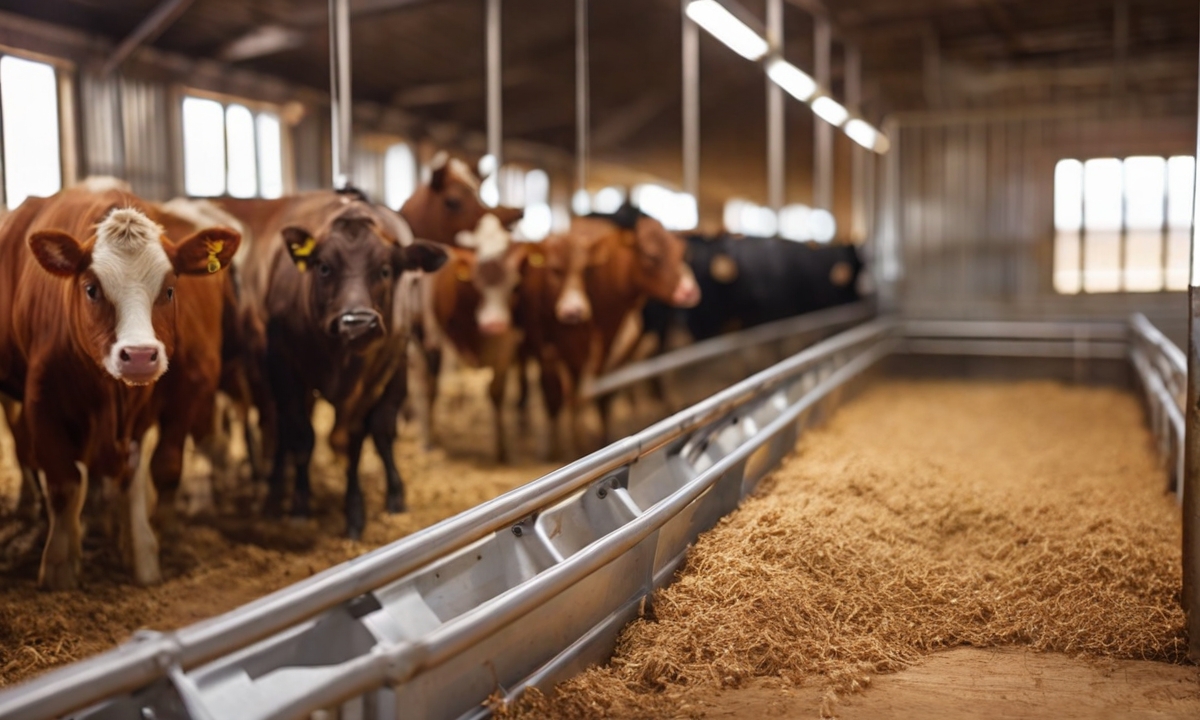
In the quest for optimized agricultural operations, it’s essential to critically assess the power struggle between automatic feed dispensers and traditional feeding methods. By illuminating the technological advancements ushered in by the former and the labor efficiencies they offer against the backdrop of the latter, we can further appreciate the agricultural evolution.
Efficiency Comparison Between Auto Feeders and Manual Labor
The scalability of auto feeders in large farm settings represents a significant shift from manual labor. These devices continually and consistently deliver exact feed measurements, leaving room for increased operational efficiency. The process mitigates the requirement for continual human oversight and physical labor, hastening feed time, reducing human error, and allowing for the exacting control of feed portions.
- Automatic feed dispensers systematically provide precise feeding times and portions, substantially reducing food waste.
- Auto feeders are less labor-intensive, potentially saving on labor costs.
- Increased operational efficiency is achieved through consistency in feeding which can significantly improve livestock health and growth.
Cost Analysis and Return on Investment for Automatic Feeders
Beyond efficiency and labor reductions, automatic feeders also carry notable financial advantages validated by various cost analysis methods. While the initial investment may be more significant than traditional feeding methods, the return on investment can be swift and impressive. Factors influencing this include labor savings, a decrease in feed wastage, and improved animal health leading to higher productivity.
- The initial setup cost is often offset by reduced labor and feed costs over time.
- Automatic feeders can facilitate predictable, streamlined budgeting due to the consistency of operations.
- Improved livestock weight gain and health can potentially increase product yield, thereby speeding up the return on investment.
Ultimately, the adoption of automatic feed dispensers signals a step towards more efficient, scalable, and sustainable farming operations.
Assessing the Environmental Impact of Automatic Feeding
In the evolving narrative of modern agriculture, a key player has emerged in the form of automatic feeding systems. Beyond improving productivity and livestock health, these cutting-edge farm management tools have the potential to significantly reduce the environmental impact of farm operations. The sustainability benefits of feeding automation stem from a combination of eco-friendly practices, resource conservation, and precision agriculture—all critical factors in our shared journey towards a greener future.
Sustainability Benefits of Feeding Automation
Every aspect of sustainable practices aims to minimize the environmental footprint as much as feasible. Feeding automation exhibits its commitment to sustainability through the incorporation of resource conservation techniques and ethical practices. For instance, these systems ensure that livestock receive the appropriate quantity and type of feed, eliminating unnecessary waste.
With automatic feeding, a farm’s energy usage can be optimized as the process typically requires less energy compared to traditional feeding methods. This, in turn, contributes to a reduction in greenhouse gas emissions. Moreover, by incorporating more sustainable feed options, farms can further alleviate their impact on the environment, promoting a significantly more sustainable agricultural sector.
Reducing Waste with Targeted Feed Dispensation
One of the key advantages of automatic feeding systems is their ability to provide targeted feed dispensation. This approach allows the feeding process to be tailored to the nutritional needs of each animal. The precision provided by this method not only promotes animal health and farm productivity but also considerably reduces waste.
Through targeted feed dispensation, overfeeding is prevented, and the waste generated from unconsumed feed is significantly lowered. Undeniably, this contributes positively to the precision agriculture movement, an approach making waves for its potential to optimize resource usage and reduce the environmental impact of farming practices. Therefore, by transitioning to automatic feeding systems, farms are not just becoming more efficient—they’re paving the way for a more sustainable future.
Installation and Maintenance of an Automatic Feeding System
Automatic Feeding Systems (AFS), such as the AFS Automatic Feeding System – Neptune Systems or the Apex Automatic Feeding System, offer several advantages in livestock management. Both installation and maintenance of these systems are critical aspects that determine their efficiency and longevity.
The process of installing an automatic feeding system starts with a detailed understanding of your specific needs, livestock type, and housing structure. An appropriate model of the feeding system that fits these needs is then chosen, after which the catalog or manual specifications are followed for a correct installation.
- Determination of the installation site which is stable, secure, and accessible for refill and maintenance.
- Correct assembly of the components as per the manufacturer’s guidelines.
- Checking all the connections and operations to ensure the smooth functioning of the system.
It’s important to remember that the assistance of a trained professional might be obligatory for the installation process, especially in the case of more advanced systems like the AFS Automatic Feeding System – Neptune Systems or Apex Automatic Feeding System.
Once installation is complete, regular maintenance becomes vital in ensuring the efficient operation of the system. Here’s a general guideline:
- Clean the feed hopper and feeding tubes regularly to prevent blockages and ensure a smooth flow of feed.
- Check all components for wear and tear and replace any damaged parts promptly.
- Investigate any mechanical or electrical issues immediately to prevent system failure.
- Assess and adjust feeding times and portions regularly according to the changing needs of the livestock.
By properly installing and diligently maintaining your automatic feeding system, you can ensure the optimal performance of these innovative systems while maximizing their benefits for your livestock management.
Conclusion
In the evolving landscape of modern agriculture, automated feeding systems (AFS) have revealed their undeniable importance. They have proven to be game-changing in streamlining livestock management by implementing consistent and precise nutritional programs. From “AFS Automatic Feeding System – Neptune Systems” to other leading solutions, these technological innovations elevate the level of livestock care and enhance productivity.
The implementation of AFS doesn’t merely streamline feeding operations but extends its benefits to a range of applications. The prowess of these systems transcends large-scale farming. Remarkably adaptable, they’re useful in unique situations such as automatic feeding in a 5×5 indoor tent for specific farming needs.
The versatility of AFS is remarkable and goes beyond traditional livestock. The advent of the automatic feeding system for cats exemplifies the widespread applicability of this technology and its potential impact on pet care. With such broad-ranging applications, holistic systems like the “Lely Vector Automatic Feeding System” signal a promising future for automated feeding technology.
In conclusion, AFS provides critical advantages for modern agriculture and beyond. Implementing such technology undoubtedly paves the way for improved livestock health, efficient farm management, and robust productivity. As these systems continue to evolve and adapt to diverse needs, they will forever transform the future of animal husbandry.
FAQ
What are Automatic Feeding Systems (AFS)?
Automatic Feeding Systems (AFS) are technologically advanced equipment designed to automate the process of feeding livestock. They play a significant role in modern agriculture, contributing to enhanced animal productivity, health, and efficient livestock management.
How are automated feeding technologies implemented in modern agriculture?
Modern agriculture practices have embraced automated feeding technology, using precision feeding systems and automatic feed dispensers. These systems maximize efficiency and ensure a consistent, precise delivery of nutrients to animals.
What benefits can be gained by implementing an Automatic Feeding System?
Implementing an Automatic Feeding System can lead to significant improvements in efficiency, animal health and growth, and productivity. The automation of feeding ensures a consistent and accurate supply of nutrients, impacting the profitability of agricultural operations positively.
How can automatic feeding systems improve precision animal husbandry?
Automatic feeding systems are vital in precision animal husbandry. These systems, particularly precision feeding systems, can improve feed efficiency, reduce waste, and promote cost savings. Additionally, smart feeding solutions can provide customizable nutrition programs tailored to individual animal needs, enhancing performance and health.
Can Automatic Feeding Systems be adapted for different types of livestock?
Yes, Automatic Feeding Systems can be specialized for various types of livestock, such as poultry, cattle, and pigs. These systems are designed to cater to unique dietary needs, enhancing growth, production, and overall herd health.
What are the benefits and challenges involved in integrating robotic feeding systems into farm management?
Integrating robotic feeding systems into farm management can increase livestock care efficiency and automate feeds. While the initial setup and investment may pose initial challenges, the long-term gains in efficiency and productivity can be significant.
How do automatic feed dispensers compare to traditional feeding methods?
Automatic feed dispensers offer significant improvements over traditional methods in terms of labor efficiency and technological advancements. Using automatic feeders can streamline operations, conserve resources, and even lead to better financial returns in the long run.
What are the environmental impacts of automatic feeding?
Automatic feeding systems can contribute significantly to sustainability in agriculture. They offer benefits such as resource conservation, eco-friendly practices, and a reduction in waste through targeted feed dispensation.
What steps are involved in the installation and maintenance of an Automatic Feeding System?
The installation and maintenance of automatic feeding systems require careful planning and technical expertise. Maintenance often involves regular system checks, cleaning, and timely updates for optimum operation. Some specific systems, like the “AFS Automatic Feeding System – Neptune Systems” or the “Apex Automatic Feeding System”, may have unique installation and maintenance requirements.
Can Automatic Feeding Systems be used beyond traditional farming, such as for pet care or in indoor environments?
Automatic Feeding Systems have a wide range of applications beyond traditional farming. They can be found in indoor environments like 5×5 indoor tents, and even within pet care, with systems specifically designed for feeding cats. There are also highly sophisticated systems like the “Lely Vector Automatic Feeding System” available in the market.
